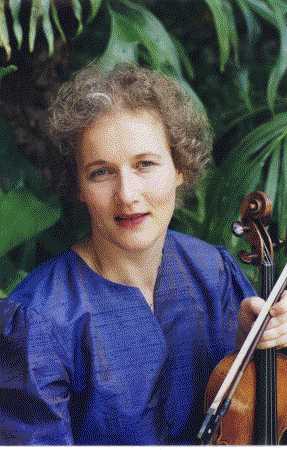 Elisabeth
Mitchelmore (violin) was born in
Elisabeth
Mitchelmore (violin) was born in Charles
Dancla, the last representative of the Classical French Violin School
The study of the works of renowned
teacher-composers can expand the technical and musical development of a violin
student. This thesis will be illustrated by examining the compositions of the
French violinist and composer, Charles Dancla.
Dancla studied with Baillot, one of the
founders of the Paris Conservatoire and the
Dancla composed, among other works,
numerous string quartets and violin pieces. He was known for his lightness in bowing
style and fine trills. Like his teacher Baillot, melody and musical expression
were at the forefront of Dancla’s work. His main legacy, however, lies mostly in
his didactic compositions.
Dancla’s op. 123, op. 89 and op. 118 (collections
of short pieces in ascending order of difficulty) are often well liked by
students and, because of their obvious structure, are relatively easy to play
from memory. They can serve as ideal performance and eisteddfod pieces at
various stages of technical and musical development. His compositions based on
well-known themes provide an ideal basis for creative expression and open
minded learning.
The structured finger exercises op. 74 are particularly
valuable for developing finger dexterity, position awareness and finger
flexibility. His earlier studies op. 68 can provide excellent material for
refining bow strokes. With his op.73 studies, Dancla gives the student
opportunity to refine left hand technique, double stop playing and fluency.
In this presentation, a selection of
Dancla’s works suitable for various stages of development will be analysed and related
to the current AMEB syllabus in order to demonstrate how the students’ learning
can be expanded and enriched by a purposeful selection of learning material. Some
pieces for two and four violins will be discussed that can inspire students and
teachers alike in their endeavour to learn, improve and play.
To clarify what can be learned, students
will perform some excerpts from Dancla’s compositions. Special attention will
be drawn to musical structure, rhythm, bow division and articulation, tone
production and expressive playing, and, in the duos, listening and learning
from each other.
 Elisabeth
Mitchelmore (violin) was born in
Elisabeth
Mitchelmore (violin) was born in